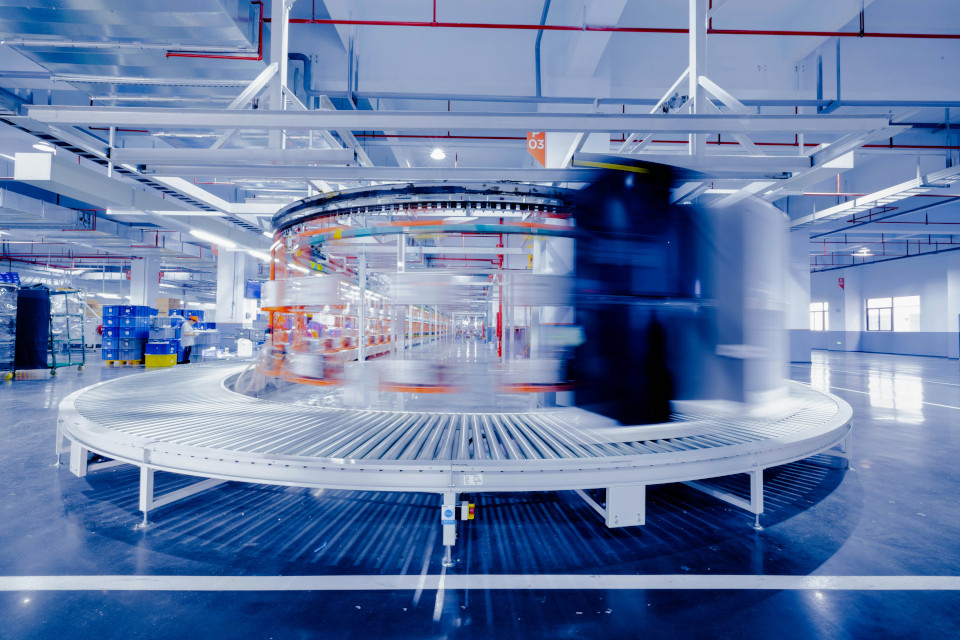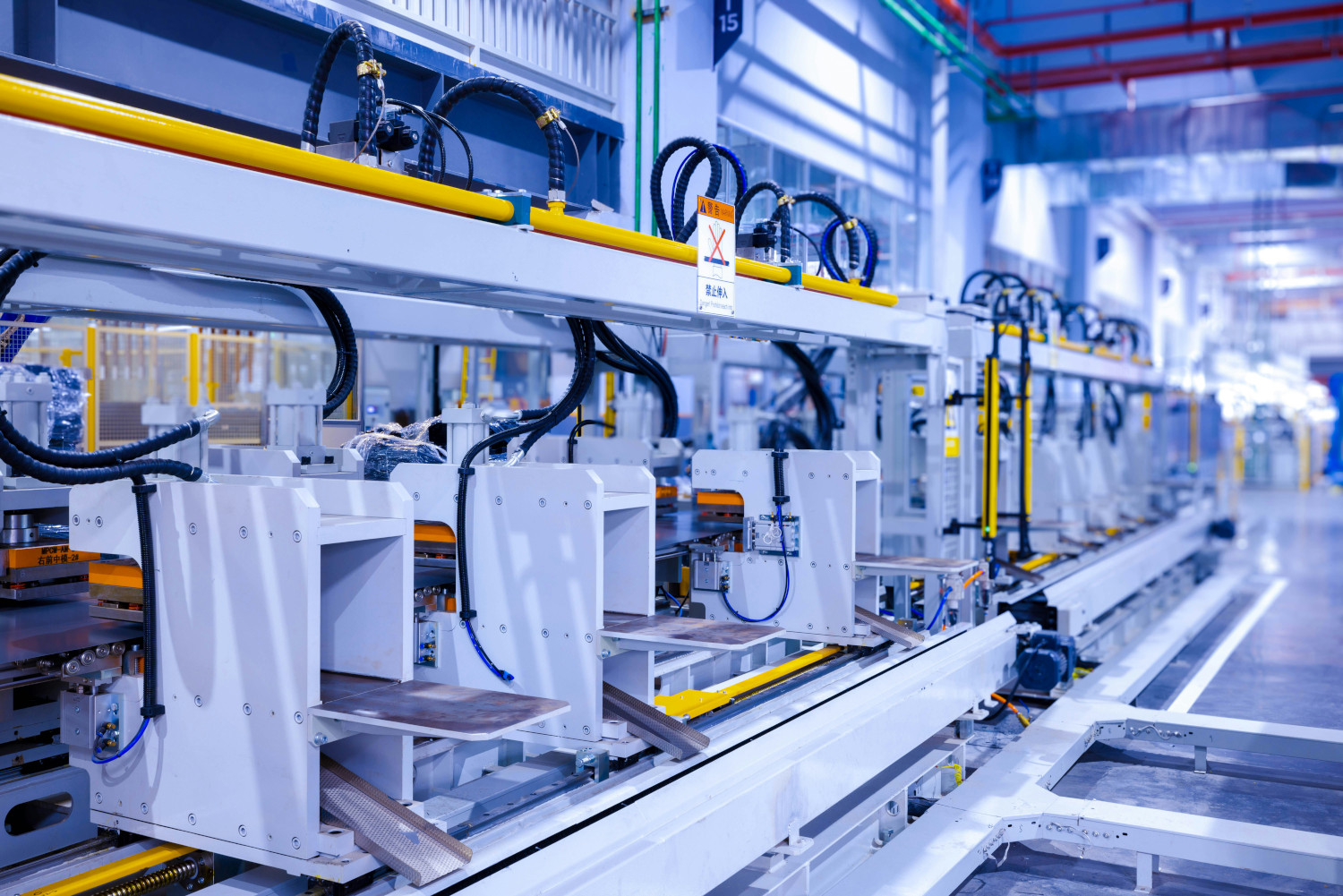How does manufacturing automation save time and money?
The process of automating manufacturing and its efficiency in both time and cost savings

The contemporary business environment is characterized by rapid growth and swift technological development. In this rapidly changing landscape, companies strive to find ways to more effectively manage their operations and improve overall performance. It becomes crucial not only to stay competitive but also to efficiently utilize available resources, such as finances and time, for accomplishing predefined tasks. Business process automation can be an effective means to achieve greater goals by using fewer resources and reducing time costs. This article explores how manufacturing automation can contribute to time and cost savings, improve efficiency, and foster long-term successful growth.
Business automation is an essential component of modern business operations. There are several levels of automation that companies can use to optimize their processes:
Basic Automation. Involves automating simple, repetitive tasks that can be performed using software or mechanical devices. For example, robotic automation can be used for inventory storage, movement, and organization.
Process Automation. Involves automating business processes to ensure their consistency and transparency. Examples of process automation include workflow automation and process analysis, often relying on specialized software.
Advanced Automation. This level of automation, due to its complexity, requires more effort and involvement. It is crucial to ensure the interaction between computer software and human resources for efficient task execution. Machine learning and natural language processing are examples of advanced automation.
Intelligent Automation. This is the most sophisticated level of automation, where artificial intelligence learns from previous situations and makes independent decisions based on data. For example, using smart sensor systems, manufacturing devices can coordinate their activities based on production conditions and perform maintenance based on past data.
Each of these levels of automation reflects the application of various technologies and methods to enhance efficiency, reduce the risk of errors, and adapt to rapidly changing business environment conditions.
Long-term scientific research has led to the increasing and widespread application of manufacturing automation in the industry. Automating manufacturing processes aims to increase the efficiency, productivity, and accuracy of production processes while reducing human resource requirements and the risk of potential errors. Various types of manufacturing automation allow companies to adapt to different needs, ensure productivity, and remain competitive in the market. This process can be carried out using specific manufacturing automation tools:
Computer-Integrated Manufacturing (CIM)
CIM is a production process control system where all stages, from product conception to manufacturing and delivery, are integrated and managed by computerized solutions. CIM involves various types of automation, from computer-aided engineering to manufacturing lines dominated by robots and automated devices.
Industrial Internet of Things (IIoT)
IIoT and smart automation are drivers of modern industrial evolution, transforming established manufacturing execution and management. IIoT includes various devices, sensors, and machines that interact in real-time through the internet, allowing more efficient data collection, sharing, and analysis. This interaction enables the manufacturing chain to become more adaptable to constantly changing market conditions.
Fixed Automation or Hard Automation
This method of manufacturing automation is often applied to simple tasks. In this case, tasks are performed according to a pre-configured set of instructions. Fixed automation is effective for mass production where product design and the manufacturing process remain stable and unchanged over a long period.
Programmable Automation
Programmable automation is a form of manufacturing automation that allows adaptation to different tasks or variations of products. This method enables the adjustment of machine parameters and actions based on electronic signals.
Flexible Automation
Flexible automation allows the rapid implementation of different, rapidly changing manufacturing processes. These systems allow machines and equipment to be quickly reprogrammed to meet new production needs. Moreover, such automation is often connected to a network that enables remote monitoring or control.
Order Processing
Automated order processing enables efficient and fast handling of customer orders and optimization of the entire supply chain. Implemented systems allow the automated acceptance of customer orders from different sources. The software can automatically update warehouse inventory after each order, ensuring accurate and real-time inventory information. These systems are capable of sending order confirmations to customers automatically, fostering trust and loyalty.
Production
Manufacturing automation streamlines production processes and ensures quality control. Integrated systems not only control production lines but also enable efficient resource utilization, reduce time resources between production process steps, and increase the efficiency of production lines. Using technologies such as machine learning and artificial intelligence, systems can automatically analyze products and identify even the smallest defects or quality deviations.

Supply Chain
Automation in the supply chain provides the ability to react quickly to market changes, minimizes dependence on manual processes, and increases overall efficiency from initial suppliers to end consumers. Automated supply chain processes enable continuous monitoring of supplier inventory. Integrated systems, considering existing stocks and forecasted future needs, can automatically generate orders. Optimizing the supply chain in this way reduces time resources and ensures proper inventory management.
An automated system for notifying issues becomes a proactive tool, reporting any emerging trends of potential problems in the supply chain. This can include shortages in supplier inventories, production disruptions, or logistics obstacles. These automated notifications enable companies to quickly respond to any emerging issues, maintaining the stability and efficiency of the supply chain.
These are just a few examples of manufacturing automation. It is important to note that each company is unique, and solutions need to be tailored to specific circumstances.
Efficient Workflow
Automated systems enable more efficient processes for several reasons. Automated manufacturing lines can operate continuously, increasing production speed and ensuring a more efficient workflow. Automated devices can continuously monitor manufacturing activities and provide data on their efficiency, allowing for decision-making based on statistical data. Additionally, the likelihood of human errors in work processes is reduced or eliminated.
Reduced Operating Costs
Automated processes reduce dependency on human resources, thereby reducing financial costs associated with employee maintenance. Moreover, manufacturing automation helps accurately plan and utilize resources such as raw materials, energy, and time. Therefore, automation can reduce operational costs and help companies more efficiently use their budgets.
Automatic Task Management
An automated system can automatically manage and adapt schedules based on manufacturing needs and resource availability. It can optimally distribute tasks and resources among different workstations and/or devices.
Operational Speed
Automated devices often perform operations faster than humans. This accelerates the manufacturing process, reducing time resources required for predefined tasks. Automated systems can operate without interruptions, speeding up overall work processes.
Increased Productivity
Automation allows optimizing resource usage and achieving higher productivity per unit of time. Manufacturing automation enables more efficient utilization of resources such as labor, machines, and energy. This can increase overall productivity and allow manufacturing to operate at a faster pace. Moreover, different processes can occur simultaneously, thereby increasing overall efficiency.
Fault Identification
Automated systems can quickly detect faults and take appropriate actions for recovery, reducing downtime in workflow. When the system identifies a fault or other unforeseen conditions, it can automatically initiate certain recovery actions. It can restructure workflow to minimize the impact on manufacturing efficiency.
If you want to learn more about automation possibilities in the manufacturing sector, we are ready to answer all your questions!
What is Business Automation?
Business (process) automation is a technological strategy that enables the automatic execution of time and resource-consuming tasks, saving human, time, and financial resources.Business automation is an essential component of modern business operations. There are several levels of automation that companies can use to optimize their processes:
Basic Automation. Involves automating simple, repetitive tasks that can be performed using software or mechanical devices. For example, robotic automation can be used for inventory storage, movement, and organization.
Process Automation. Involves automating business processes to ensure their consistency and transparency. Examples of process automation include workflow automation and process analysis, often relying on specialized software.
Advanced Automation. This level of automation, due to its complexity, requires more effort and involvement. It is crucial to ensure the interaction between computer software and human resources for efficient task execution. Machine learning and natural language processing are examples of advanced automation.
Intelligent Automation. This is the most sophisticated level of automation, where artificial intelligence learns from previous situations and makes independent decisions based on data. For example, using smart sensor systems, manufacturing devices can coordinate their activities based on production conditions and perform maintenance based on past data.
Each of these levels of automation reflects the application of various technologies and methods to enhance efficiency, reduce the risk of errors, and adapt to rapidly changing business environment conditions.
How can manufacturing automation be applied?
Manufacturing automation is the process by which companies or manufacturing devices use technology to automate and optimize production processes. Manufacturing control software or robotic tools are used to implement this process.Long-term scientific research has led to the increasing and widespread application of manufacturing automation in the industry. Automating manufacturing processes aims to increase the efficiency, productivity, and accuracy of production processes while reducing human resource requirements and the risk of potential errors. Various types of manufacturing automation allow companies to adapt to different needs, ensure productivity, and remain competitive in the market. This process can be carried out using specific manufacturing automation tools:
Computer-Integrated Manufacturing (CIM)
CIM is a production process control system where all stages, from product conception to manufacturing and delivery, are integrated and managed by computerized solutions. CIM involves various types of automation, from computer-aided engineering to manufacturing lines dominated by robots and automated devices.
Industrial Internet of Things (IIoT)
IIoT and smart automation are drivers of modern industrial evolution, transforming established manufacturing execution and management. IIoT includes various devices, sensors, and machines that interact in real-time through the internet, allowing more efficient data collection, sharing, and analysis. This interaction enables the manufacturing chain to become more adaptable to constantly changing market conditions.

Fixed Automation or Hard Automation
This method of manufacturing automation is often applied to simple tasks. In this case, tasks are performed according to a pre-configured set of instructions. Fixed automation is effective for mass production where product design and the manufacturing process remain stable and unchanged over a long period.
Programmable Automation
Programmable automation is a form of manufacturing automation that allows adaptation to different tasks or variations of products. This method enables the adjustment of machine parameters and actions based on electronic signals.
Flexible Automation
Flexible automation allows the rapid implementation of different, rapidly changing manufacturing processes. These systems allow machines and equipment to be quickly reprogrammed to meet new production needs. Moreover, such automation is often connected to a network that enables remote monitoring or control.
Where can manufacturing automation be applied in a real working environment?
Manufacturing automation can be applied in various business process areas. However, the decision to implement automation processes must be based on the specific nature of the company's operations, the characteristics of the manufacturing process, available resources, and future goals. Below are examples of automation applied in the manufacturing sector:Order Processing
Automated order processing enables efficient and fast handling of customer orders and optimization of the entire supply chain. Implemented systems allow the automated acceptance of customer orders from different sources. The software can automatically update warehouse inventory after each order, ensuring accurate and real-time inventory information. These systems are capable of sending order confirmations to customers automatically, fostering trust and loyalty.
Production
Manufacturing automation streamlines production processes and ensures quality control. Integrated systems not only control production lines but also enable efficient resource utilization, reduce time resources between production process steps, and increase the efficiency of production lines. Using technologies such as machine learning and artificial intelligence, systems can automatically analyze products and identify even the smallest defects or quality deviations.

Supply Chain
Automation in the supply chain provides the ability to react quickly to market changes, minimizes dependence on manual processes, and increases overall efficiency from initial suppliers to end consumers. Automated supply chain processes enable continuous monitoring of supplier inventory. Integrated systems, considering existing stocks and forecasted future needs, can automatically generate orders. Optimizing the supply chain in this way reduces time resources and ensures proper inventory management.
An automated system for notifying issues becomes a proactive tool, reporting any emerging trends of potential problems in the supply chain. This can include shortages in supplier inventories, production disruptions, or logistics obstacles. These automated notifications enable companies to quickly respond to any emerging issues, maintaining the stability and efficiency of the supply chain.
These are just a few examples of manufacturing automation. It is important to note that each company is unique, and solutions need to be tailored to specific circumstances.
How does manufacturing automation contribute to cost savings?
Automation can significantly contribute to increasing company efficiency and thus save time and money. Below are ways in which manufacturing automation helps save resources:Efficient Workflow
Automated systems enable more efficient processes for several reasons. Automated manufacturing lines can operate continuously, increasing production speed and ensuring a more efficient workflow. Automated devices can continuously monitor manufacturing activities and provide data on their efficiency, allowing for decision-making based on statistical data. Additionally, the likelihood of human errors in work processes is reduced or eliminated.
Reduced Operating Costs
Automated processes reduce dependency on human resources, thereby reducing financial costs associated with employee maintenance. Moreover, manufacturing automation helps accurately plan and utilize resources such as raw materials, energy, and time. Therefore, automation can reduce operational costs and help companies more efficiently use their budgets.
Automatic Task Management
An automated system can automatically manage and adapt schedules based on manufacturing needs and resource availability. It can optimally distribute tasks and resources among different workstations and/or devices.
Operational Speed
Automated devices often perform operations faster than humans. This accelerates the manufacturing process, reducing time resources required for predefined tasks. Automated systems can operate without interruptions, speeding up overall work processes.
Increased Productivity
Automation allows optimizing resource usage and achieving higher productivity per unit of time. Manufacturing automation enables more efficient utilization of resources such as labor, machines, and energy. This can increase overall productivity and allow manufacturing to operate at a faster pace. Moreover, different processes can occur simultaneously, thereby increasing overall efficiency.
Fault Identification
Automated systems can quickly detect faults and take appropriate actions for recovery, reducing downtime in workflow. When the system identifies a fault or other unforeseen conditions, it can automatically initiate certain recovery actions. It can restructure workflow to minimize the impact on manufacturing efficiency.
Closing:
Manufacturing automation is a method that helps ensure effective operational outcomes. The diversity of technologies provides opportunities to collect, analyze, and visualize data. Therefore, manufacturing automation can also contribute to product quality. Automated systems help reduce or eliminate the likelihood of human errors, as well as time and financial resources allocated to repetitive tasks, thereby allowing a focus on strategic aspects of business development.If you want to learn more about automation possibilities in the manufacturing sector, we are ready to answer all your questions!
